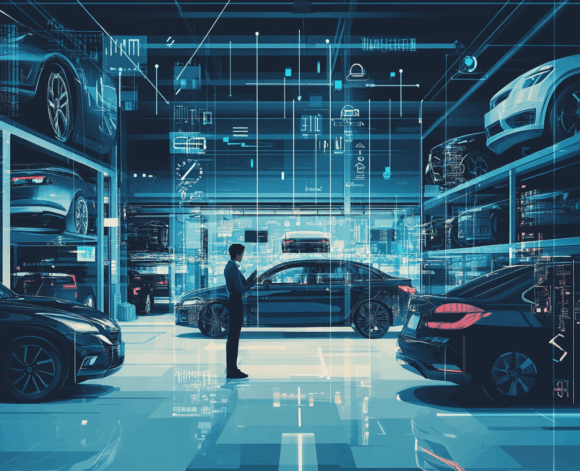Cars of today are more than just forms of transportation; they are mobile data hubs. Not only is the modernization of cars making life easier for people driving to work, dropping the kids at school, or going on road trips, but it is also greatly benefiting claims professionals and claimants themselves when accidents or other incidents arise.
The world of automotive vehicle forensics is complex, nuanced and rapidly evolving. While cars vary in shape, style, and speed, an underlying common characteristic in today’s world is their plethora of data that can help us as claims professionals—by way of event data recorders (EDR), infotainment data and in-vehicle cameras.

Much like flight recorders in airplanes, these devices capture crucial pre- and post-collision data such as vehicle speed, brake application, accelerator pedal percentage, seatbelt usage, airbag deployment, steering input and much more. This information is especially useful in serious accidents where facts are disputed, or the driver is unable to provide an account due to injury.
For claims professionals, EDR data has provided a factual baseline that supports or challenges the details reported in a claim. When used in conjunction with modernized technology such as dashcams, telematics, and infotainment data, EDRs contribute to a more complete, data-driven picture of the incident, making investigations more precise, fair, and defensible.
Watch: How Telematics and Infotainment Data are Revolutionizing Accident Investigations
Building on the data-driven approach, infotainment data now plays an increasingly important role in modern claims investigations. Beyond being used for entertainment and communication, infotainment systems can be used to generate data such as location information, whose phone was connected to the vehicle, call and text logs, and vehicle speed and direction that can serve as a goldmine for piecing together insurance claims when necessary.
A process that was traditionally reliant on witness testimonies, grainy camera footage, police reports, and physical inspections, these claim investigations are now bolstered with infotainment and EDR data. These digital breadcrumbs let the car “tell its own story” when it comes to claims and can paint a precise picture of where a vehicle was, when it was there, who may have been in the vehicle, and most importantly what the driver was doing at the time of an incident. While these technology tools do not replace the critical role of human judgement, irrefutable data like this can help humans steer decisions on claims seamlessly and with clear evidence.
While backup cameras and dashcams have existed for quite some time, they are also proving their increased importance in the automotive claims ecosystem.
Related: We Have Entered A New Era of Auto Claims Complexity
For claims professionals, this kind of footage can be the difference between a drawn-out investigation and a clear-cut resolution. We’ve seen an uptick in not only rideshare or commercial drivers, but everyday motorists purchasing dashcams and their motivation is clear: they want to protect themselves in the event of a collision, dispute, or roadside incident. Dashcams provide a reliable, unbiased record of what occurred in real time. Whether it’s a rear-end accident at a stoplight or a contested lane change on the freeway, this evidence helps establish fault quickly and accurately. For adjusters, this dashcam footage can eliminate the need for conflicting witness statements or assumptions based on vehicle damage alone. As more drivers recognize this value, the use of in-vehicle cameras is expected to become a standard, not a luxury.
Prior to these developments in the automotive space, there used to be lots of uncertainties due to lack of granular details, making insurance fraud more likely to slip under the radar. Unfortunately, fraudulent claims coming across our desk are more common than they should be, but thanks to these complex data points and revolutionized forms of technology, lowering the rates of fraud is a lot easier as falsehoods about incidents are harder for people to sustain. This not only helps the victims in these scenarios, but also the claims professionals and insurers overseeing the case.
As older vehicles are gradually phased out and newer, more connected models hit the road, these modernization trends will only accelerate. The future of automotive technology points toward even greater transparency and integration—from advanced driver assistance systems to full telematics capabilities. This means that soon, nearly every component of a claim can be digitally verified, significantly enhancing the integrity and efficiency of the claims process and pointing to a frontier where technology meets trust. The smarter cars get, the smarter processes become and the better service we can offer to policyholders who rely on claims administrators in moments of need.
Ensor is a senior forensic engineer/team lead for vehicle forensic team at EFI Global. He is a mechanical engineer with experience in the forensic engineering and accident reconstruction fields.
Was this article valuable?
Here are more articles you may enjoy.


 Wells Fargo Sued by Ex-Manager Who Said Bank Faked Diversity
Wells Fargo Sued by Ex-Manager Who Said Bank Faked Diversity  Jump Trading Faces $4 Billion Terraform Administrator Suit
Jump Trading Faces $4 Billion Terraform Administrator Suit  Instacart to Pay $60 Million in FTC Consumer Protection Case
Instacart to Pay $60 Million in FTC Consumer Protection Case  Tesla Drivers Are Buying Escape Tools and Cars to Avoid Getting Trapped Inside
Tesla Drivers Are Buying Escape Tools and Cars to Avoid Getting Trapped Inside 